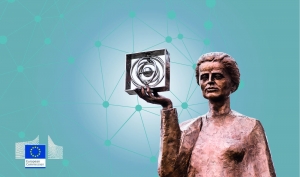ESR1
Project title: Bridging the Valley of Death
Researcher: Krishnamani Jayaraman
Krishnamani Jayaraman is a techno-legal expert with over a decade of professional experience amalgamating the biological sciences and intellectual property domains. He served as Head of Department of Intellectual Property and Technology transfer Management for Sami Labs Limited (Bangalore, India)/Sabinsa Corporation, NJ, USA group of companies. An alumnus of the Faculty of Medicine, Manipal University, India and the Faculty of Law, Maastricht University, Netherlands, Krishnamani Jayaraman has completed post graduate (M.Sc.) research degrees in Medical Microbiology and Intellectual Property Law & Knowledge Management.
Krishnamani’s core research interests include the inter-relationships between intellectual property, innovation policy, global trade and access to health care.
Email: k.jayaraman@maastrichtuniversity.nl

Host Institution: Maastricht University; Degree Partner: Universität Augsburg
Objectives:
The term “Valley of Death” is used to describe the period of time from the initial funding of a start-up firm until the moment revenues are generated. The most common occurrence of the “valley of Death” phenomenon lies in ‘non-economic’ factors surrounding early stage investments, where insufficient attention is given to necessary investment decisions at later stages of the innovation process. This is very pertinent in sectors where public-private partnerships are required to bring new technologies to market, as is the case in heavily regulated markets such as pharmaceuticals and biotechnology, or in new technological markets such as for geen energy and CO2 emissions reduction technologies. Although European science still produces innovative science, production and innovative product design increasingly takes place elsewhere, raising the question how the European innovation regime can be made more competitive and fit for purpose. IP rights can play an important role in the innovation cycle in order to bridge this gap in funding; as key assets, vehicles for investment, transfer of technology, and as disseminators of knowledge. ESR1 will analyse how substantive IP law can be reformed with a view to bridging the valley of death. This in relation to, inter alia, IPR’s institutional setting at the grant and enforcement, in relation to taxation, and in R&D agreements and royalty arrangements.
Expected Results:
A better understanding of the role of IP rights in the wider context of innovation, covering finance, tax incentives, public-private partnerships, and a more efficient legal regime for licensing, standardisation and education on IP rights, innovation and entrepreneurship.
Planned secondment(s): Chemelot InSciTe, and ASTP Proton
Supervisors:
Co-supervisor:




